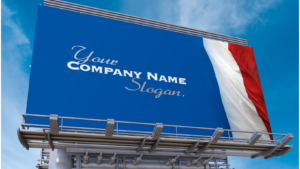Publicity Stunts—Are They Truly Effective?
Hey, let’s do a publicity stunt! We’ll get lots of press, the coverage will go viral on social media and we’ll get tons of business.
Of course, the reality can be very different. Case in point, in 1982 a radio station in Allentown, Pennsylvania, changed its format from country to nostalgia hits and the station owner came up with a publicity stunt in the hopes of boosting ratings. He ran a contest where three guys camped out at a station billboard and whoever stayed the longest would get a mobile home as a prize. While a mobile home doesn’t sound like much, this was the early 1980’s when the nation was experiencing a recession. Unemployment was 12 percent and the interest rate for mortgages was close to 18 percent. So, this was a chance at home ownership for the winner.
Well, the contest lasted for 261 days. It attracted media coverage from the all over the U.S., as well as Australia, France and Japan. One contestant was even arrested for marijuana possession and to this day he feels it was a set up to end the contest. The other two were awarded mobile homes when the station cried uncle over the publicity that was turning negative.
As you can guess the station didn’t get a bump in ratings and it now has a completely different format. To top it off, the contest became the subject of a documentary called Billboard Boys. Granted, no one could have foreseen that this publicity stunt would turn out the way it did, but if your company is considering a publicity stunt, there are some things you need to consider first.
Is it safe?
When you are considering a publicity stunt, think about all the things that could go wrong, in particular, could it cause physical or emotional harm to someone? If the answer is yes, reconsider doing it. The risk may be small, but if it happens on your watch, how will you defend your company’s decision to do the stunt? You want your stunt to be remembered for the right reasons, because it was funny or memorable and highlighted your company’s products, not because someone was hurt as a result of your stunt.
Is the stunt related to your product or service?
The Allentown radio station billboard stunt had the participants camp out on a billboard that advertised the radio station. The idea was that any media images of the participants would feature the station’s ID and logo. Even that wasn’t a total success since one participant was photographed by an Allentown newspaper while he was wearing a T-shirt from a Philadelphia radio station. In addition, this person called the Philadelphia radio station every morning to talk about life on the billboard.
One publicity stunt that worked was done by the makers of the game Cards Against Humanity. On Black Friday in 2016, the company raised money to dig a giant hole and when the money ran out, they filled it up. If you know about the game and those who play it, then you know that they like a good joke. The idea of the company digging a hole then filling it up is something players of the game would get and the subsequent publicity helped to introduce new players to the game.
Don’t let it be one and done
While the nature of a publicity stunt is a combination of Ha-Ha and Gotcha, you need to leverage it as part of a larger campaign. Capture any publicity and put it on your social media channels. If possible use the stunt as a part of an overall advertising campaign. Andy Warhol’s prediction of everyone getting 15 minutes of fame can come true. Since the news cycle quickly moves on to the next thing, you don’t want your successful stunt to fade into oblivion. What else are you doing to get the word out about your product or service? If your company doesn’t have a regular marketing campaign, create one. You need to get your company’s name out there more than once in a while if you want people to remember it and ultimately buy your product or use your service.
Publicity stunts can be fun and if done right they can lead to an increase in business. Yet, due to the ephemeral nature of a publicity stunt, a company can’t rely on them as a permanent part of their marketing planning. If you want to see an increase in business, you need to have an ongoing marketing strategy; of course, one that includes public relations (wink, wink), and not depend solely on one tactic that may or may not be effective at achieving your goals.

